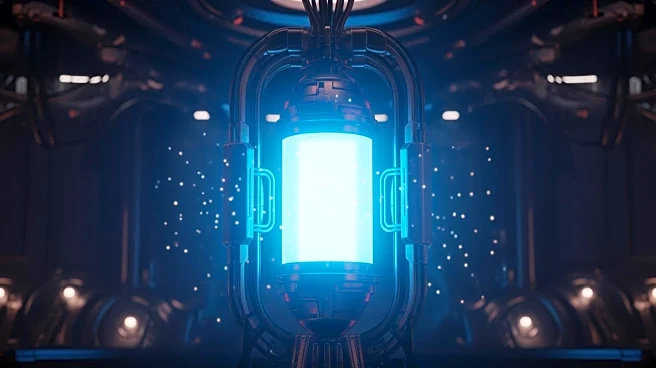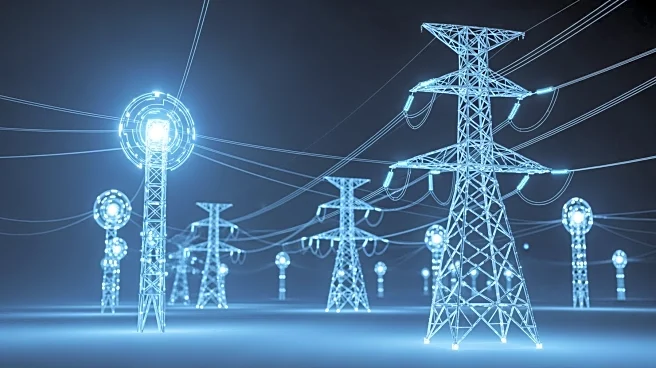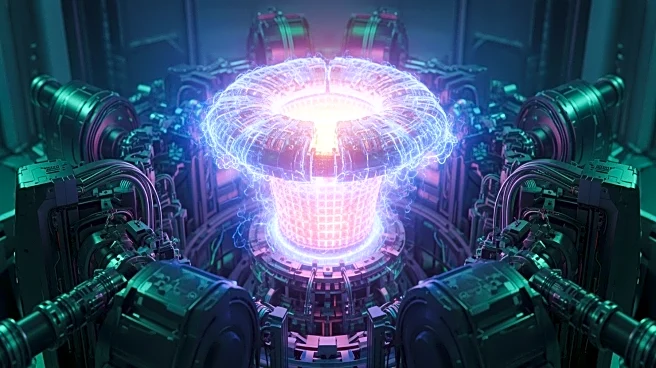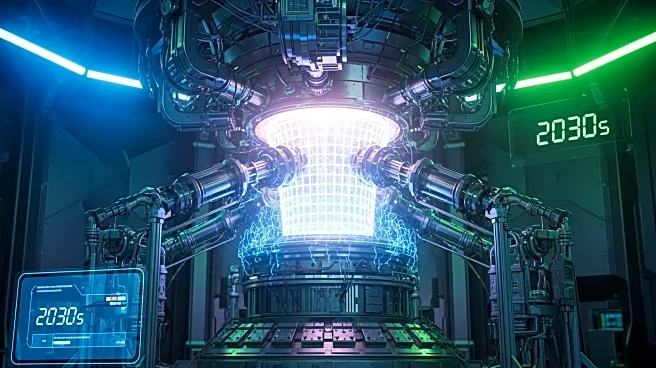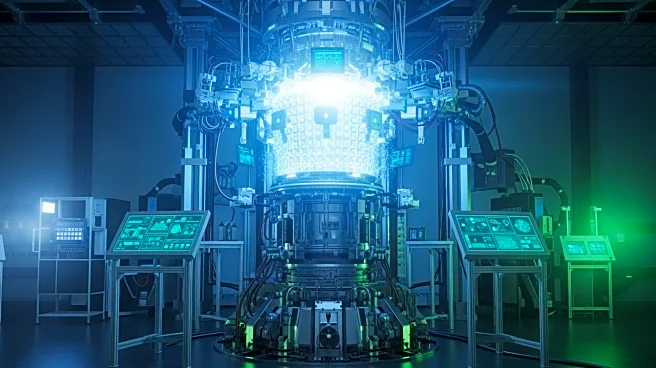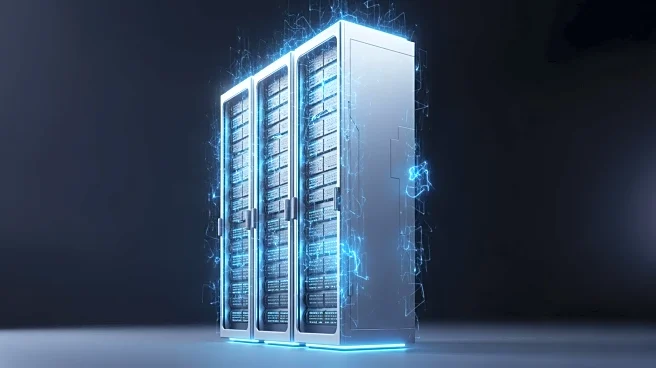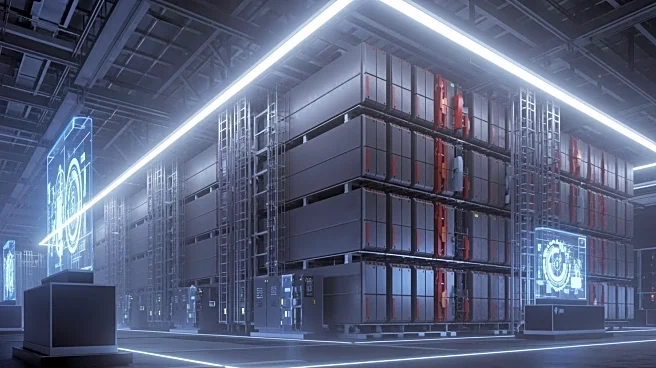What's Happening?
The Department of Energy (DOE) has released a new roadmap aimed at advancing fusion energy in the United States. This plan outlines the commitment to support research and development efforts and foster public-private partnerships to build the first generation
of fusion power plants. The roadmap sets an ambitious timeline to deploy commercial-scale fusion power to electricity grids by the mid-2030s. However, the DOE has acknowledged that the plan lacks specific funding commitments, as future funding will depend on Congressional appropriations. Fusion energy, which mimics the process of stars producing light and heat, promises a carbon-free energy source without the radioactive waste associated with nuclear fission. Despite the potential benefits, achieving a net energy gain from fusion remains a significant scientific challenge.
Why It's Important?
The development of fusion energy is crucial for the U.S. as it seeks sustainable and clean energy solutions to meet growing electricity demands. Fusion energy could significantly reduce reliance on fossil fuels and decrease carbon emissions, aligning with global climate goals. The roadmap's emphasis on AI and public-private partnerships highlights the innovative approaches being considered to overcome technical challenges. However, the lack of committed funding raises concerns about the feasibility of achieving the roadmap's goals. The success of fusion energy could transform the energy landscape, benefiting industries and consumers by providing a reliable and clean power source.
What's Next?
The DOE's roadmap suggests the establishment of regional hubs for fusion innovation, where collaborations between government, academia, and private companies can foster technological advancements and workforce development. The roadmap also highlights the need for developing structural materials and recycling fusion fuels to support commercial viability. As the plan progresses, stakeholders will closely monitor Congressional decisions regarding funding appropriations. The involvement of major tech companies and private investors indicates a growing interest in fusion energy, which could drive further investments and accelerate development.
Beyond the Headlines
The roadmap's focus on AI as a transformative tool for fusion energy underscores the potential for technological breakthroughs in energy research. AI models could expedite the study of experimental facilities, enhancing the efficiency of fusion energy development. The collaboration between tech giants and research institutions may lead to innovative solutions that address the challenges of fusion energy. Additionally, the roadmap's emphasis on public-private partnerships reflects a broader trend of integrating diverse expertise to tackle complex scientific problems.
